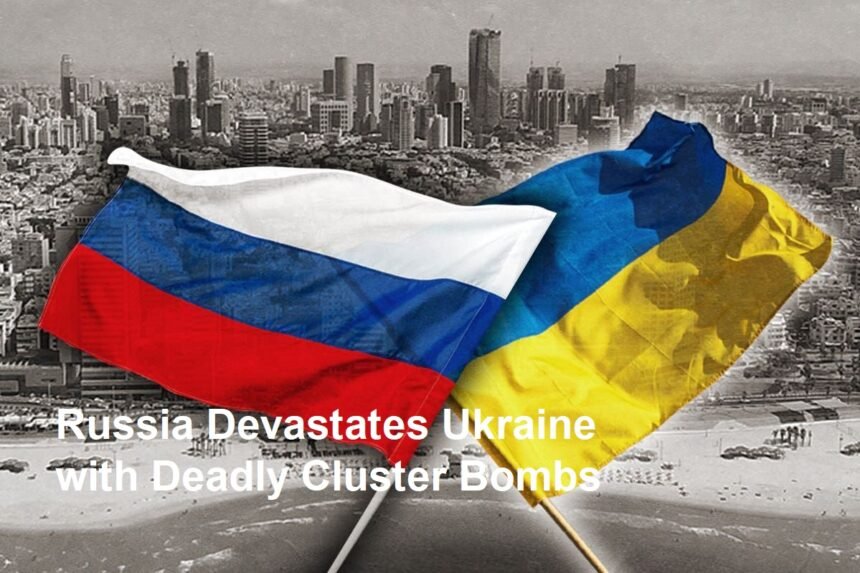The ongoing conflict between Russia and Ukraine has witnessed the deployment of various modern and terrifying weapons. Among the most controversial and fatal is the cluster bomb—a weapon that has become a grim symbol of the devastation in the region. As the war drags on, reports from the frontlines indicate that Russia has increasingly relied on the use of deadly cluster munitions to batter Ukrainian positions and civilian infrastructure, inflicting immense suffering and raising profound legal and ethical questions.
From the early phases of the invasion, Russian forces have demonstrated a willingness to use whatever means deemed necessary to gain a tactical advantage. Cluster bombs, notorious for their wide area of destruction and their deadly aftereffects, have played a central role in assaults on Ukrainian territory. But what exactly are these weapons, and why do they spark so much outrage on the global stage?
Cluster bombs are not single explosives. Instead, they are large canisters that, once deployed, release dozens or even hundreds of smaller submunitions—often called “bomblets”—over a wide area. Their intended purpose is to maximize damage against military targets such as troops, vehicles, or airfields. However, their lack of precision and unpredictable spread make them notorious for causing indiscriminate harm. Many bomblets fail to detonate on impact, remaining buried in the ground for years and posing a hidden menace to anyone who comes near—especially civilians and curious children.
Recent months have seen a surge in verified accounts and harrowing testimonies from Ukrainians living near the frontlines. Villages and towns across the Donbas, Kharkiv, and Kherson regions have suffered repeated cluster munition attacks. The aftermath is often scenes of ruined homes, smoldering vehicles, and unexploded bomblets scattered among rubble and fields. Humanitarian groups and demining teams face enormous challenges trying to locate and neutralize unexploded ordnance, often risking their own lives.
The humanitarian impact cannot be overstated. Cluster bombs do not distinguish between soldier and civilian, between military barracks and kindergartens. Reports from international organizations show that a significant percentage of the victims are children drawn to the small, toy-like submunitions. Hospitals in Ukraine have documented cases of grievous wounds, amputations, and psychological trauma among survivors. In many cases, families have had to flee ancestral homes, too fearful to return because unexploded bomblets still lurk beneath the soil.
Legal experts note that over 120 countries have signed the 2008 Convention on Cluster Munitions, which bans the use, production, and transfer of such weapons. Russia—and, notably, Ukraine—are not party to this convention. This legal loophole provides cover, but the international community has widely condemned the use of cluster bombs in civilian areas as a potential war crime. Numerous calls have been issued from human rights groups and foreign leaders, urging Moscow to desist from such tactics.
Yet the strategic calculus pursued by Russia reveals the dark logic of modern total warfare. By saturating large areas with cluster munitions, the Russian military hopes to break Ukrainian resistance, disrupt supply lines, and create zones too hazardous for counterattacks. This makes humanitarian operations and reconstruction efforts even more daunting, using fear and chaos as tools of war.
The use of cluster bombs by Russia has also affected the diplomatic field, deepening its isolation and damaging chances for negotiated peace. Images of devastated Ukrainian communities, wounded children, and desperate families resonate worldwide, fueling outrage and calls for accountability. International agencies have accelerated aid to Ukraine, providing medical support and training deminers, but the threat remains entrenched.
As the smoke of war continues to blot out hopes for quick peace, one thing is tragically clear: the scars left by cluster bombs will endure long after the fighting stops. Fields once ripe for harvest may instead yield lethal remnants for years to come. The Ukrainian people, resilient as they are, face a new and insidious enemy in the form of unexploded ordnance—one that threatens lives, livelihoods, and the very possibility of rebuilding after the guns finally fall silent.












